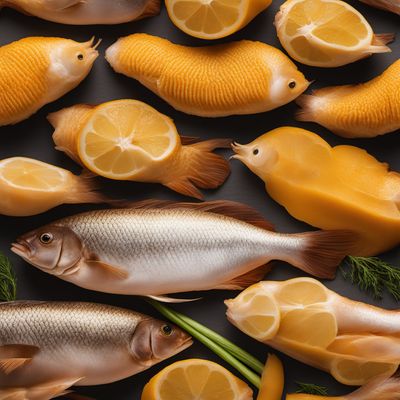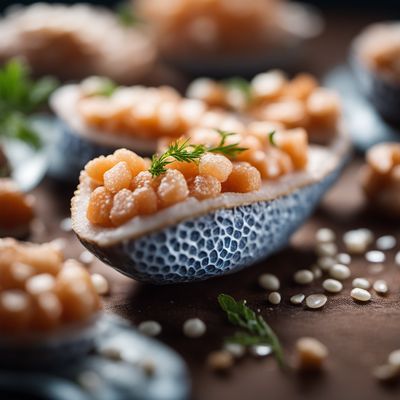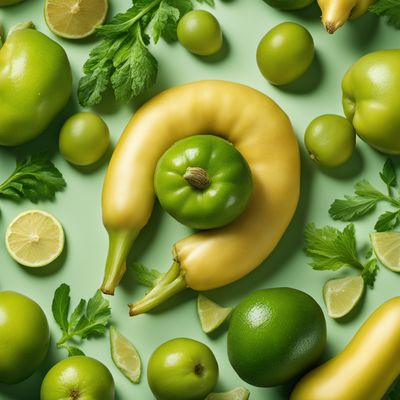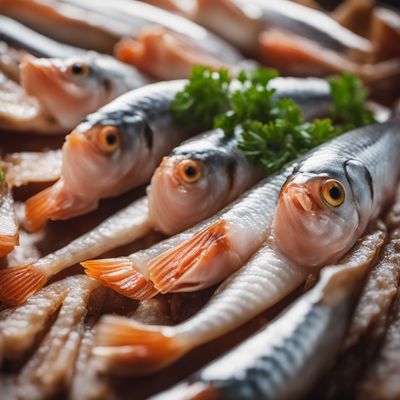
Ingredient
Cobia
The Versatile Fish: Cobia
Cobia is a large fish with a firm, white flesh that has a mild and slightly sweet flavor. Its texture is similar to that of mahi-mahi or swordfish. Cobia is a good source of lean protein and omega-3 fatty acids, making it a healthy choice for seafood enthusiasts. It can be grilled, baked, broiled, or even eaten raw in sushi or sashimi.
Origins and history
Cobia is native to warm oceanic waters and is commonly found in the Atlantic Ocean, particularly in the Gulf of Mexico and the Caribbean Sea. It is also cultivated in aquaculture farms in countries like the United States, Mexico, and Vietnam. Cobia has gained popularity in recent years due to its versatility and sustainable farming practices.
Nutritional information
Cobia is a good source of lean protein and omega-3 fatty acids. It is also low in saturated fat and a good source of vitamins B6 and B12.
Allergens
Cobia may cause allergic reactions in individuals with fish allergies. It is important to exercise caution and consult with a healthcare professional if you have known fish allergies.
How to select
When selecting fresh cobia, look for firm and shiny fillets with a mild oceanic smell. The flesh should be translucent and free from any discoloration or signs of spoilage. If purchasing whole cobia, the eyes should be clear and bulging, indicating freshness.
Storage recommendations
To maintain the freshness of cobia, store it in the refrigerator at a temperature of 32°F to 38°F (0°C to 3°C). It is best to consume cobia within 1-2 days of purchase to ensure optimal flavor and quality. If freezing cobia, wrap it tightly in plastic wrap or place it in an airtight container to prevent freezer burn.
How to produce
Cobia is primarily produced through aquaculture, making it more readily available year-round. However, wild-caught cobia is also available, particularly in regions where it is native.
Preparation tips
Cobia can be prepared using various cooking methods, including grilling, baking, broiling, or pan-searing. It is important not to overcook cobia to maintain its delicate flavor and moist texture. Cobia pairs well with citrus flavors, herbs like dill or cilantro, and sauces like lemon butter or teriyaki.
Substitutions
If cobia is not available, you can substitute it with other firm and mild-flavored fish like mahi-mahi, swordfish, or grouper. However, keep in mind that the taste and texture may vary slightly.
Culinary uses
Cobia is a versatile fish that can be used in a wide range of dishes, including grilled cobia steaks, cobia ceviche, cobia tacos, or cobia curry. It is popular in both Western and Asian cuisines.
Availability
Cobia is commonly available in the United States, particularly in states along the Gulf of Mexico and the East Coast. It is also exported to other countries, including Japan, China, and Europe.
More ingredients from this category » Browse all

Mackerels, jack and horse mackerel, scads
The Flavorful and Nutrient-Rich Catch

Pompanos
The Versatile Delicacy: Pompanos

Amberjack
The Versatile Ocean Delight

Capelin
The Tiny Fish with Big Flavor: Exploring the Delights of Capelin

Butterfish
"The Delicate Delight: Unveiling the Secrets of Butterfish"

Bluefish
"The Bold and Flavorful Bluefish: A Seafood Delight"

Pomfret, atlantic
The Ocean's Delicacy: Atlantic Pomfret

Horse jack
Equine Delicacy

Pomfret, Indo-Pacific
The Ocean's Delicacy

Dolphinfishes
The Versatile Delight

Garfish
The Sleek and Versatile Garfish

Barracudas
The Fierce Predator of the Sea